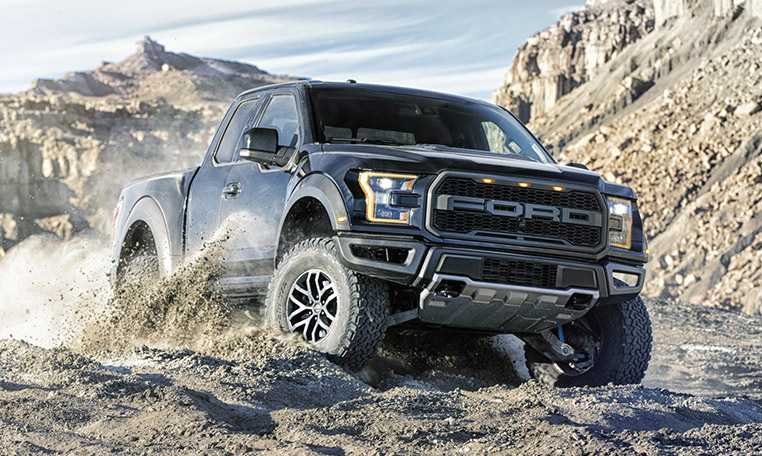When the all-new Ford Raptor hit showrooms last fall, few could foresee the extent of the innovations beyond its high-output engine and new skin. Along with all the power and agility gains comes the most advanced drive mode system in its class* – a cutting-edge Terrain Management System™. It is enabled by an all-new dual-mode transfer case that incorporates both all-wheel-drive and four-wheel-drive systems and electronic lockers to deliver the ultimate multi-terrain experience.
To give Raptor drivers more performance and capability both on-road and off, Ford Performance engineers developed this all-new transfer case to manage the distribution of power between front and rear wheels. Key to that is clutch-based, on-demand all-wheel-drive capability for everyday driving, including all-weather mode, while also providing a mechanically locked, durable four-wheel-drive system for confidence in severe off-road driving environments.
When combined with the non-sequential 10-speed transmission and high-output EcoBoost® engine, Raptor can deliver its 450 horsepower and 510 lb.-ft. of torque more efficiently for the ultimate driving experience – whether you’re on the road or way, way off.
“Raptor’s transfer case provides the best of both worlds, with the natural benefits from all-wheel drive, such as increased traction in rain and snow, as well as extreme off-road capability that comes with a mechanically locked system,” says Tony Greco, Ford F-150 Raptor program manager.
Typically, four-wheel-drive options for trucks come in two transfer case varieties – on-demand systems that employ a clutch to transfer torque to the front driveline, similar to how all-wheel-drive setups work, or electronic shift-on-the-fly systems that use mechanical locks to couple the front and rear driveshafts.
Ford engineers sought to enhance the daily driving experience of Raptor while preserving its ultimate off-road performance. With the clutch-based feature of the transfer case, drivers can travel on-road using the 4×4 auto setting, which delivers the benefit of four-wheel drive without the repercussions of component damage or driveline binding – something that can occur when drivers try to use mechanically locked systems on high-traction surfaces like pavement.
Ford fine-tuned the calibration of 4×4 auto depending on road surface conditions, so the transfer case can vary the clutch torque to suit the environment. For example, when the driver selects weather mode via the Terrain Management System, it’s tuned for slippery surfaces, while sport mode is tuned to feature more of a rear bias that can provide a fun driving experience, including better acceleration and on-road performance.
When Raptor is operating off-road, its electronic shift-on-the-fly system is still available in the form of 4×4 high and 4×4 low – enabling drivers to navigate harsh terrain with confidence and added robustness. In mud/sand mode and Baja mode, the transfer case shifts into 4×4 high, making it optimal for tackling trails and loose or soft ground – as well as engaging in high-speed desert runs. In rock crawl mode, the transfer case employs 4×4 low, enabling intense off-road driving and rock climbing at low speeds, while using an additional gear reduction ratio to provide enhanced capability with improved powertrain response.
In all cases that involve severe environments or conditions, the transfer case delivers flexibility for elite performance. While the Terrain Management System is designed with default 4×4 settings, drivers can manually override the settings to further fine-tune the system for a different experience.
The system was performance-tested in nearly 2,500 miles of competition testing in the 2016 Best in the Desert series, completing the 850-mile SCORE Baja 1000 to conclude the season. In the end, Greg Foutz Motorsports team members drove the truck another 400 miles back to their headquarters in Arizona.







